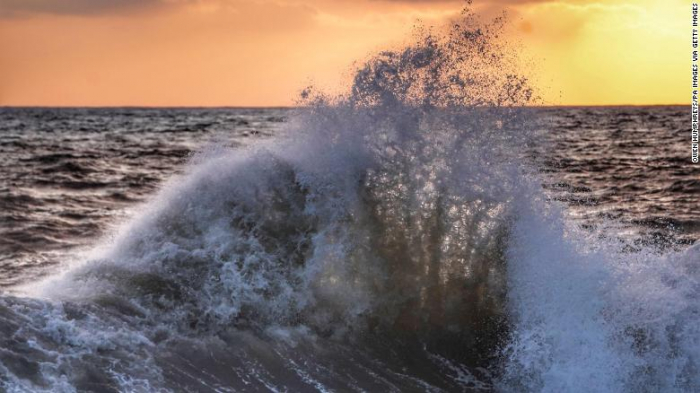Stormier oceans could raise the likelihood of coastal flooding and exacerbate erosion, increasing the vulnerability of settlements on the coast, study author Ian Young, a professor of ocean engineering, said.
"There is a high probability that climate change is playing a role but exactly how this works is still not fully understood," he added.
Weather phenomena including El Niño, the North Atlantic Oscillation and the Pacific Decadal Oscillation could also have affected ocean conditions, he said.
Young and research fellow Agustinus Ribal analyzed data on wind speed and wave height from 31 different satellites, calibrated against 80 ocean buoys, between 1985 and 2018.
They found both wave height and wind speed increased worldwide, with a significant rise in extreme winds and waves.
The biggest change was found in the Southern Ocean, where extreme winds increased by 1.5 meters (5 feet) per second, or a total of 8% over the 33-year period. The height of extreme waves grew by 30 centimeters (12 inches), or 5%.
Extreme wind speed also increased in the equatorial Pacific and Atlantic, as well as the North Atlantic, by 0.6 meters (2 feet) per second.
"Although increases of 5% for waves and 8% for winds may not seem like much, if sustained into the future such changes to our climate will have major impacts," Young told CNN.
"The potential impacts of climate-induced sea level rise are well known. What most people don't understand is that the actual flooding events are caused by storm surge and breaking waves associated with storms. The increased sea level just makes these events more serious and more frequent," he explained.
"There will potentially be an impact on coastal flooding and coastal erosion," he said. "These changes are also important for the design of coastal and offshore structures and even the breakup of the Antarctic ice pack."
Gerd Masselink, a professor of coastal geomorphology at the University of Plymouth in the UK, commended the "incredibly robust methodology" of the study, adding, "It largely confirms the picture [scientists] have been building over the last 10 years."
"The coastal region is very much affected by the changes in wave conditions," Masselink said. "Storms are getting more intense, but those intense storms are also happening with a rising sea level -- it's a double-whammy effect."
However, the study does not prove an association with climate change, he stressed, explaining: "There are very complex climate systems that control the weather, which vary from decade to decade even without a trend like climate change."
"In order to filter out that natural variability that occurs over a decade, you need to get many, many decades of data. Thirty years is too short to be conclusive about it."
"Though I must say that it does fit what we expect from climate change, which is an increase in climate variability and an increased risk of more extreme conditions," Masselink said.
CNN
















































